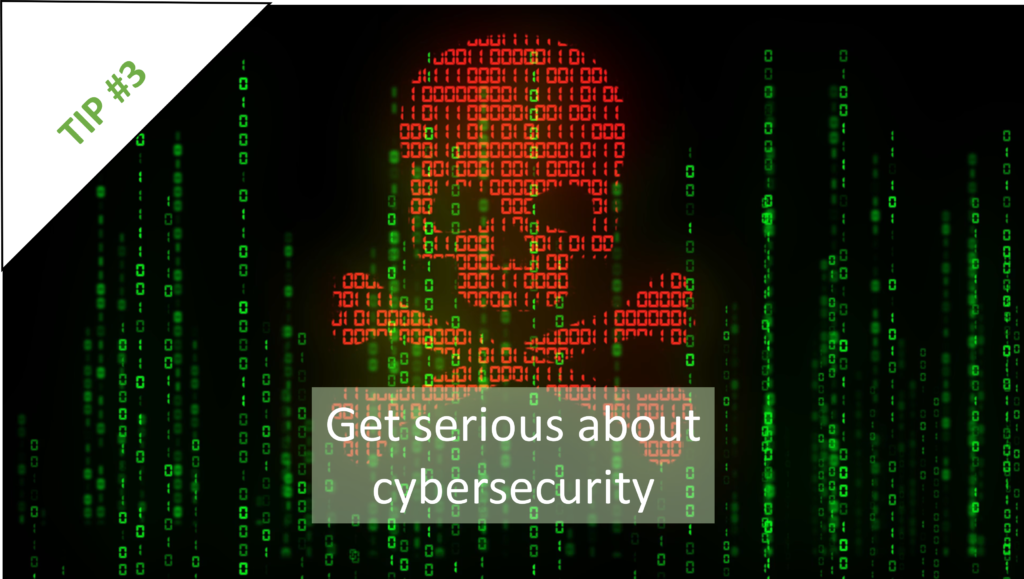Get Serious About Cybersecurity

At first, Erik was confused when neither he nor any of his four employees could access anything on his company’s computer network. “Nothing was working,” he says, “and then it became clear that a hacker had hijacked the network.”
This was not a moment Erik had prepared for. In fact, he didn’t believe that a cyberattack would ever be something he needed to deal with. “I’ve seen the statistics that say small businesses are targeted by hackers,” he says, “but come on, I really didn’t think they would even stumble across us. We’re so small!”.
Erik’s belief that his company was too small for hackers to care about is one that many small business owners mistakenly hold. As a result, many are just like Erik—unprepared for an event that has fast become a matter of when, not if, it will happen.
According to several studies, more than 46% of all cyber breaches targeted small businesses, and 82% of ransomware attacks targeted small businesses in 2021. All signs point to an escalation in these trends. This is because small businesses are soft targets. Most lack appropriate cyber defenses and are, therefore, low-hanging fruit for hackers.
There are many ways a hacker could “stumble” across your business. The most likely way is that they’ll get ahold of your and/or your employees’ email addresses (which are almost certainly available on the dark web) and send an email that contains an infected link or attachment. This is called phishing, and hackers send an estimated 3 billion phishing emails every day. The emails appear to come from a legitimate source such as Microsoft or Amazon and usually paint a scenario that requires your immediate attention so that you’ll click the link or open the attachment. Once you’ve done that, they’ve got you, and that’s very bad news.
An astonishing 60% of small businesses shut down after experiencing a cyberattack. Why? Because the costs associated with stopping the attack, cleaning up your network, and recovering your data, plus the revenue losses due to your team being unable to get any work done, can easily run north of $50,000.
The good news is there’s a lot you can do to prevent a cyberattack. Here are a few steps to take right now:
- Create and implement a cybersecurity policy: Your cybersecurity policy should outline your company’s approach to cybersecurity, including guidelines for employees and procedures for handling potential security incidents.
- Train your employees: Employees should be trained on how to recognize and respond to cyber threats, such as phishing emails, and how to use security software and devices. This training should happen annually with short refreshers at least quarterly.
- Use strong passwords: Passwords should be at least eight characters long and should include a combination of letters, numbers, and special characters. Passphrases are an excellent option. Passwords should also be changed regularly.
- Keep software updated: Only 38% of small businesses update their software regularly. This creates a major vulnerability because software providers release updates to patch security vulnerabilities as they become aware of them. Ensure that all of your software and devices are updated with the latest security patches and updates.
- Regularly back up data: Regularly backing up data can help you recover from a cyberattack or other data loss. After all, if a hacker locks you out of your data and you have a backup, you can quickly get your people back to work.
- Use firewalls and antivirus software: Firewalls can help prevent unauthorized access to your company’s network, while antivirus software can detect and remove malware.
A cyberattack is one of the most severe threats to your business’s stability and success. You need to get serious about protecting your company from this threat today.
Free Resource: Take my free cybersecurity risk assessment to learn what your vulnerabilities may be. You can access it here. It takes about 10 minutes to complete.
Free Resource: For a limited time, take my free online course, Cybersecurity Essentials for Small Business Owners, and access a ton of great resources to help you begin implementing cybersecurity in your business. Enroll here.
